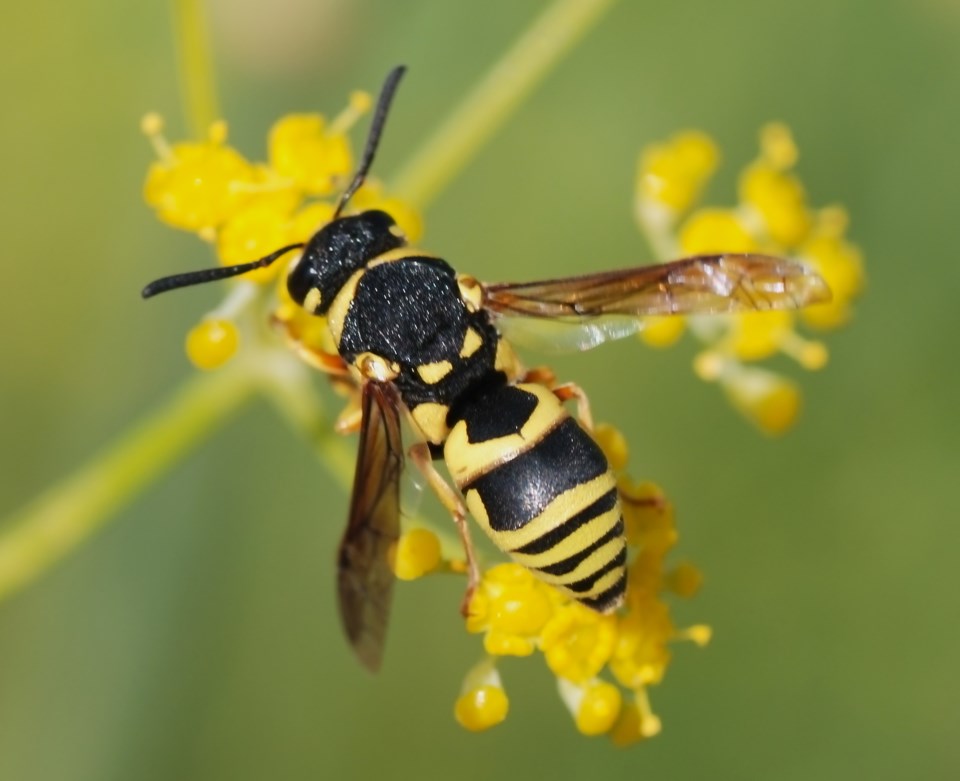The buzz in the garden right now is wasps or at least what we may think is wasps. What we all know for sure is all of these flying insects of the genus Hymenoptera are beautiful to watch, but all can sting. Sometimes we forget that these sometimes annoying creatures are several species of hornets, bees and wasps that are exceptional pollinators in our gardens.
There are thousands of different species of bees and wasps. Hornets are a subspecies of wasps while bees are an entirely different group of insects. Some of the common wasps include paper wasps, mud daubers and the ever common yellowjacket wasps that we often confuse with honeybees. Common bee species we see include bumblebees, honey bees and carpenter bees. Most bees have bigger abdomens than hornets and wasps and are usually less aggressive. Wasps and hornets are generally smooth and hairless while bees are generally quite fuzzy with hair.
Wasps serve a role in the food chain as they rid the garden of many pests. Sometimes it is hard for us to remember their worth but they are important. They belong to a large diverse group of insects that prey on other insects. Their major food source is eating other bugs – flies, caterpillars, grasshoppers and a host of other backyard pests. Those who like to dine outside in late summer often find that wasps are a bit of a problem. Barbeques, picnics and outdoor gatherings can easily provide a great food source for wasps – one that they do not have to search for! Crumbs, spilled juice, bones and a variety of other food-like garbage provide easy pickings for wasps. It can help in areas where humans frequent to use a bait or a trap to keep the wasps away from your chosen areas. There are a variety of wasp traps on the market, some of which are quite beautiful. If you choose to make your own it is relatively easy. Use a plastic pot bottle and pour a bit of fruit juice, leftover food or ripe fruit as bait in the bottom of the bottle. There is of course no magic solution to avoiding wasps at this time of year – except of course to stay inside which is not a solution at all. However, try to avoid wearing sweet scents when working outside as that will attract wasps. If there is an abundance of wasps, then it is time for some detective work. It is relatively easy to watch where the wasps are flying to determine the location of the nest. Wasps will generally only fly within about 300 m of the area they frequent. Once the nest is found, the choice is yours whether to eradicate it or not. If you choose to rid the garden of these critters, then there are several sprays on the market that work well. Please follow all directions carefully.
If you do happen to get stung, wash the wound with soap and water. Treat the wound with ice, meat tenderizer or a freshly cut onion to help destroy the venom. Anti-histamines are a good idea as they reduce symptoms of pain and swelling. Rest and do not drink alcohol. Ensure that you seek medical attention if the sting is close to the mouth or throat or if you have an allergy to bee or wasp stings.
Hanbidge is the Lead Horticulturist with Orchid Horticulture. Find us at ; by email at [email protected]; on Facebook @orchidhort and Instagram at #orchidhort. Tune into GROW Live on our Facebook page or check out the Youtube channel GROW




